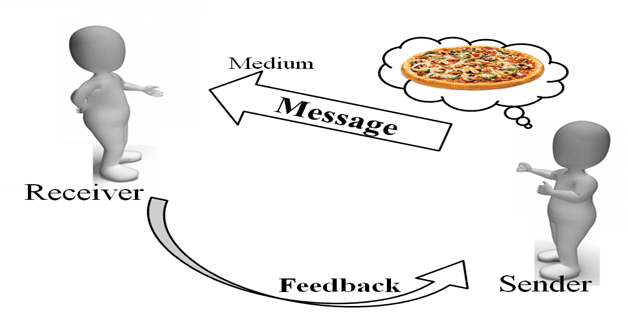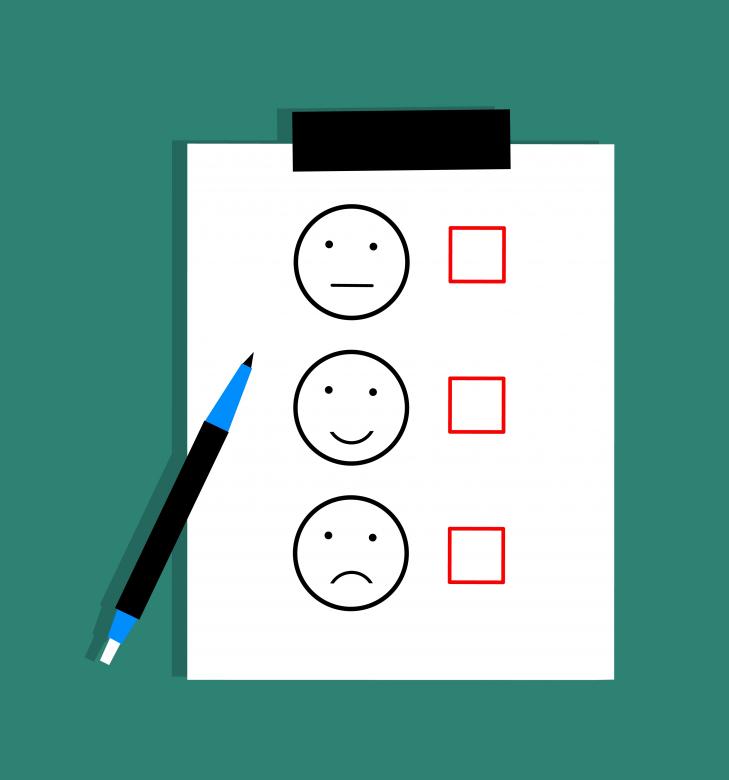Jump To Section
Why are effective communication skills important?
Having effective communication skills will improve many aspects of your life. Being a good communicator is beneficial to both your personal and professional life. Many doors that were previously closed will open up when you master your communication skills.
Being an effective communicator is the difference between a person understanding what you are saying to them or your information being completely misunderstood. Ineffective communication can be very frustrating for everybody involved. The importance of communication skills can’t be overstated.
Effective communication is also key to making lasting connections with people. These connections can open up many doors for you. People love to work with people that they feel like they can communicate with. As a matter of fact, in a LinkedIn Survey conducted in 2016, effective communication skills were the number one skill sought after by employers.
With the importance of communication in your life, you have no reason not to work on your skills a little bit. Unless of course, you have already mastered the art of communication.
Contained in this article you will find multiple tips on how to be a good communicator. Hopefully, many of these tips are new to you and you gain some valuable information from this article. Even if you have heard many of these tips before, this article should be a great refresher and you will still improve your communication skills if you put these lessons into action.
What is Communication?

Communication seems pretty simple. It’s the act of people sending messages to one another. The problem is how well those messages are sent and received between people.
The key points of communication are encoding, medium, decoding, and feedback.
Encoding is how the sender translates the message. For example, a message between friends may be phrased in words only the two understand.
Medium is how the message is transmitted. Some examples are text messages, emails, or verbal communication.
Decoding is how the message is translated by the receiver.
Feedback is given by the receiver to acknowledge that the message was understood. For example, feedback may be something as simple as saying I understand.
Types of Conversations
All conversations can be either one-way or two-way conversations. One-way conversations are conversations in which one person does the majority of the talking to another person or group. One person transmits information to others. Two-way conversations are conversations in which information is transmitted and received by two or more parties. All parties take part in the conversation.
This can be broken down a little more into 4 types of conversation.
Discourse is a one-way form of communication used to deliver information. For example, a teacher giving a lecture would utilize this style of communication.
Diatribe is another form of one-way communication. This style of communication typically contains more emotion and is used for things like giving inspirational speeches or reprimanding another person.
Dialogue is a form of two-way communication used to exchange information and build relationships. A simple chat about the weather is a form of dialogue.
Debate is a form of two-way communication used to win or convince. Negotiation is an example of a debate.
Understanding which type of conversation you are in is important in determining which type of communication style to use. When you are in a conversation, take a moment to decide what type of conversation you are in or what type would be best for the situation. Sometimes you will realize that you are attempting to utilize the wrong type of conversation to convey your message.
The Seven Cs of Communication
- Completeness
- Conciseness
- Consideration
- Clarity
- Correctness
- Courtesy
- Coherence
Context
Context is the background information that is relevant to communication. This can include physical, social, cultural, and personal contexts. It can also be used to support or oppose the message being sent.
Completeness
When it comes to communicating, there is no such thing as too much information. When you’re talking with someone else, you want to make sure that they are getting all of the information they need to understand what you’re telling them. If you leave something out, whether by accident or on purpose, the person may feel confused and frustrated when trying to make sense of what happened or why this thing happened in a certain way. This can create more problems than it solves!
Therefore: Be complete! Be sure that every piece of relevant information has been provided so everyone can process what’s happening in their own way.
Consideration
When you are communicating, consider the other person’s feelings and needs. Be sure to give them your undivided attention. Also, be aware of their time constraints as well as their physical space. Don’t invade it unnecessarily.
When you provide others with information, try not to overwhelm them with too much at once. Instead, consider breaking up the information into smaller steps or chunks that are easier for them to digest one bite at a time (rather than all at once).
Courtesy
Courtesy is the most basic elements of communication. It shows up in the way you treat the people around you and how well you take care of them. Courtesy includes how you speak, and how you write.
For example:
- Use “please” and “thank you” at work. If someone asks for something from your department or sends an email asking a question about a project that affects your group, be polite when responding to him or her. Even if he or she isn’t being particularly nice to your team members.
- Avoid slang terms like “literally” when talking with coworkers who might not know what they mean (unless they do). Similarly, avoid jargon unless it’s necessary for explaining technical details to colleagues who are doing similar work as yours. Or else risk creating confusion among everyone else in the office!
- Don’t send too many emails at once. This will cause confusion with other coworkers trying to respond as quickly as possible without getting lost in all those messages coming across their desks all day long!
Clarity
Clarity is the ability to communicate ideas clearly and effectively. Clarity is about the message. What you’re trying to say and how well you’re saying it. This is important because it allows the recipient to understand what you’re trying to say, without having to ask for clarification.
Correctness
The most crucial aspect of communication is ensuring that your message is correct. This means you should use proper grammar and spelling, correct punctuation, correct capitalization, correct numbers and dates, and times as well.
Coherency
The seventh C is Coherency, which refers to the logical flow of ideas. When you and your listener are communicating coherently, you’re able to understand one another and clearly convey your thoughts.
Coherence is achieved by using logical connectors like “because,” “therefore” and “consequently.” For example:
- I am not going because I have an appointment for lunch at 1 p.m., therefore we cannot meet on Thursday at 2 p.m.
Tips for Improving Communication Skills
Tip #1: Listening

When it comes to communicating effectively, active listening skills are some of the most important areas of communication. Too often, we are thinking about what we are going to say next instead of listening to what the other person is saying. When we do this, we don’t truly hear what is being said and our responses might be just a little off. This causes wires to get crossed during conversation and a lot of miscommunication. It is better to listen to what the other person is saying, then respond naturally when they are finished.
Tip #2: Body Language and Nonverbal Communication
Body language is a huge part of effective communication. It is said that 93 percent of communication is non-verbal. 55 percent of which is body language. Our faces, hand gestures, and even the way we stand can give up a lot of information about the way we feel even if our words say otherwise. People pick up on these little clues subconsciously and even consciously.
For example, looking down at the ground could be a sign of nervousness. The way a person’s body is positioned toward another person is a very good sign of how interested they are. Standing up straight can be a sign of confidence. Being aware of your and other people’s body language can increase your communication skills.
Important Factors of Body Language in Effective Communication
Smile
Smiling can help put the other person at ease during a discussion. Now, this nonverbal communication tactic should be used as often as possible but only when appropriate. We shouldn’t be smiling while we give somebody bad news because that could be very confusing for the receiver and may send the wrong message. Smiling may not seem like an important factor in communication but it can change the mood of a conversation significantly.
Eye Contact
You want to maintain good eye contact with the person you are talking to. This not only shows confidence but also shows them you are interested in what they have to say. Don’t get too carried away if you stare into their eyes without looking away, it can get awkward. When you do look away, look to the side and avoid looking at the ground because that could be a sign of a lack of interest.
Posture
You should have an open posture and be relaxed in most conversations. Doing things like crossing your legs or arms can show that you are closed off and may even appear aggressive to the other person and send off the wrong nonverbal communication. Also, face the person you are talking to with your body because this shows interest. If you are ever in a group of people and someone is talking, take a look at where people’s feet are facing. If they are interested their feet will normally be facing the person talking. If they are not interested one or both feet will be facing away from the person talking.
Hand Gestures
While it’s ok to use hand gestures while talking, you don’t want to go overboard. Going overboard can make you seem excited or agitated when you are not. Also over the top hand gestures can be distracting for the person you are talking to and may take away from the message you are trying to send.
Understanding body language and nonverbal communication are important for powerful communication skills. For more examples and tips click here.
Tip #3: Tone
The other 38 percent of nonverbal communication is tone. Changing the tone of words can change the whole meaning. Without tone, there would be no such thing as sarcasm. Skilled communicators understand the importance of their tone.
Many factors go into a person’s tone. Speed, volume, and pitch are all factors when it comes to tone of voice.
Important Factors of Tone in Body Language and Effective Communication
Speed
How fast or slow you talk can mean different things. For instance, if you talk faster than normal it could show excitement or agitation. On the other hand, if you talk slower than normal it could mean you are trying to make sure the other person understands. When talking to others you want to maintain the right speed for the message you are trying to convey. Keeping too slow of a pace may allow the other person’s mind to wander.
Pitch
The pitch of the voice can also mean a lot of different things. For example, a higher-than-normal pitch could mean lying or uncertainty. Whereas a lower pitch typically means confidence. A deeper voice is also more soothing to others in most situations. Whenever possible you want to try to keep your pitch on the lower end without it becoming too unnatural.
Volume
The volume you use when speaking can say a lot. If you talk too loudly it can seem aggressive. If you talk too quietly it can show shyness. Although some people naturally talk louder or quieter than others, volume gives you a lot of information about a person’s feelings.
In this communication tip, you learned the importance of tone of voice in communication. If you would like more information on the tone of voice in conversation check out this article.
Tip #4: Mirroring

Mirroring is a technique used to build rapport with the person or persons you are communicating with and can increase your effective communication skills immensely. This can be an extremely powerful tool if you use this correctly. To mirror somebody you match their tone and mannerisms. For instance, when someone is talking fast because they are excited you talk a little faster than normal with excitement in your voice.
You can also do this with physical attributes like mirroring the way somebody is standing. When you mirror other people in conversation, you build subconscious connections. Just be careful not to go too overboard with it to where the person consciously sees you copying them. These acts of mirroring should be subtle and natural.
Tip #5: Know Your Audience
Have you ever told a joke that you thought was hilarious but the person you were telling it to, found it rude or offensive? This is an example of not knowing or understanding your audience. This is a vital piece of communication that many people overlook. You should be talking to your boss differently than you talk to your friends. There are a million different ways to say the same thing, so before you start talking think about which way is best for the person you are talking to.
Tip #6: Be Sincere
Take a sincere interest in what other people are saying. If you honestly don’t care what the other person is saying it will show. This is one of those things that can be catastrophic to the conversation. Most people are very good about picking up either consciously or subconsciously when someone doesn’t care what they have to say. This means when you are talking to someone, give them your full attention the best you can.
Tip #7: Look for Feedback

You always want to look for feedback that your message is being received. Feedback from a receiver can be head nods, repeating the message, questions being asked, or anything else that shows you they are listening and understanding what you are saying. If you aren’t receiving this conversational feedback ask for it. Depending on what the conversation is about you can ask the person if they understand what you are saying or you can ask them if they have ever had an experience like the story you’re telling them.
Tip #8: Ask Open-Ended Questions
Closed-ended questions are great for making sure the other person is listening but open-ended questions are great for keeping conversations going. Closed-ended questions are questions that can normally be answered with short answers like yes or no. Open-ended questions are questions that require longer responses to answer. An example of a closed-ended question is “Do you like the beach”? Whereas an open-ended question is something like “What is it about the beach that you like”? Using more open-ended questions in your daily life will not only keep conversations going longer but will also help you learn more about the person you are talking to.
Tip #9: Start and End with Key Points
When trying to make a point it is best to start and end the conversation with your key points. This helps reinforce what you are saying. For example, I often go up to my employees and ask them to get something done that I need to be completed. Then I may ask them how their day is going. The last thing I say before walking away is don’t forget to get XYZ taken care of for me. A little reinforcement keeps my points fresh in their mind. This can be very good for your communication skills when you are trying to prove a point.
Tip #10: Lose the Script

Sometimes we try to plan out what we are going to say when we talk to somebody. This can hurt us in a few ways. First, when we have a conversation scripted out in our mind we tend to think about what we are going to say next instead of listening to the person we are conversing with. Secondly, if the person we are conversing with says something we weren’t expecting we get thrown off. Having key points that we want to hit in a conversation is great but don’t script out how the whole conversation is going to go. Just getting a little better at ad-libbing will increase your abilities.
Tip #11: Build Rapport
As I discussed earlier mirroring is a great tactic for building rapport but that is not the only way to build rapport. Finding common interests is another great way to build rapport with others. Talk about various topics until you find something that peaks both of your interests. When you find a topic that peaks both of your interests dig a little deeper and let that be your building block for the conversation. Learning to build rapport with people is very important when it comes to being an effective communicator.
Tip #12: Utilize the Power of the Pause
The power of the pause is an amazing tool. If you don’t currently know what it is or how to use it, it’s something you need to put into your toolkit immediately. When you believe somebody is not telling you everything or is not telling you the truth, take a long pause after they stop speaking. Normally silence makes people very uncomfortable in conversation so most of the time these people will start talking more to fill that silence. This is when the truth or the rest of the story will come out. That extra pause can be extremely helpful in extracting information from people.
Tip #13: Focus on the Other Person
Most people love to talk about themselves. Why wouldn’t they? It’s what they know best. If you want a conversation to keep going continue to ask a person questions about themselves. Ask them about what they do for a living, what they like to do for fun, or how they feel about certain things. Getting people to talk about themselves shows that you take an interest in them.
Tip #14: Put the Phone Away
This one should be a no-brainer but it needs to be said. To have a good conversation put your phone away. Not only is it really rude to constantly check your phone in the middle of somebody else talking but you will lose your train of thought during the conversation. If you have to check your phone apologize and excuse yourself for a second.
Tip #15: Be Authentic
Similarly to being sincere, you should be authentic in your conversations. Be yourself. It’s okay to show a little bit of vulnerability to others. Don’t try to be like someone else just to fit in. Trying to be something you’re not is exhausting and unsustainable. Eventually, the real you will come out so why not just be yourself from the start?
Tip #16: Be clear and concise
Clear and concise communication is essential in any setting, whether it’s a personal or professional conversation. To be clear and concise, you must organize your thoughts before speaking, use simple language, and avoid jargon or technical terms that the other person may not understand. Additionally, you should use examples and analogies to help the other person understand your message.
Tip #17: Be aware of cultural differences
Cultural differences can affect communication in significant ways, so it’s essential to be aware of them. This involves understanding different communication styles, norms, and values. For example, some cultures may place a greater emphasis on indirect communication, while others may value directness.
Tip #18: Use active voice
Active voice is a more effective way to communicate because it is more direct and engaging. To use active voice, you must use strong verbs and avoid passive voice. For example, instead of saying “The report was written by John,” you could say “John wrote the report.”
Tip #19: Use humor appropriately
Humor can be an effective way to connect with others and build rapport, but it must be used appropriately. To use humor effectively, you must be aware of the other person’s sense of humor and avoid making jokes that could be offensive or inappropriate.
Tip #20: Be confident
Confidence is an important aspect of communication because it helps you convey your message effectively. To be confident, you must believe in yourself and your message. Additionally, you should maintain good posture, make eye contact, and speak clearly and assertively.
Tip #21: Practice active reading
Active reading is an important skill for effective communication because it helps you understand the other person’s perspective. To practice active reading, you must read between the lines, ask questions, and look for hidden meanings. Additionally, you should summarize what you have read to ensure that you have understood the message.
Tip #22: Be aware of your biases
Biases can affect communication in significant ways, so it’s important to be aware of them. This involves acknowledging your biases and trying to overcome them. Additionally, you should avoid making assumptions based on stereotypes or prejudices.
Tip #23: Be aware of your emotions
Emotions can affect communication in significant ways, so it’s important to be aware of them. This involves acknowledging your emotions and trying to manage them effectively. Additionally, you should be aware of the other person’s emotions and respond appropriately.
Tip #24: Be flexible
Flexibility is an important aspect of communication because it helps you adapt to different situations and people. To be flexible, you must be open to new ideas and perspectives, avoid making assumptions or judgments, and be willing to adjust your communication style based on the situation. Additionally, you should be willing to compromise and find common ground with the other person.
Final Thoughts On How To Be A Good Communicator
Effective communication skills are vital in so many aspects of our lives. I hope you gained some valuable information from this article on how to improve your communication skills. The important part is to keep working on improving your skills as a communicator. The best way to do it is through experience. Look for opportunities to talk to people more. Like anything else, the more you do it, the more your abilities will increase. Now get out there and become the master communicator you are destined to be.
Improving your communication skills is one way to achieve personal growth but click the link to find 16 more ways for personal growth.
Thank you for reading my article on how to master communication skills please don’t forget to share and subscribe using the buttons below.


